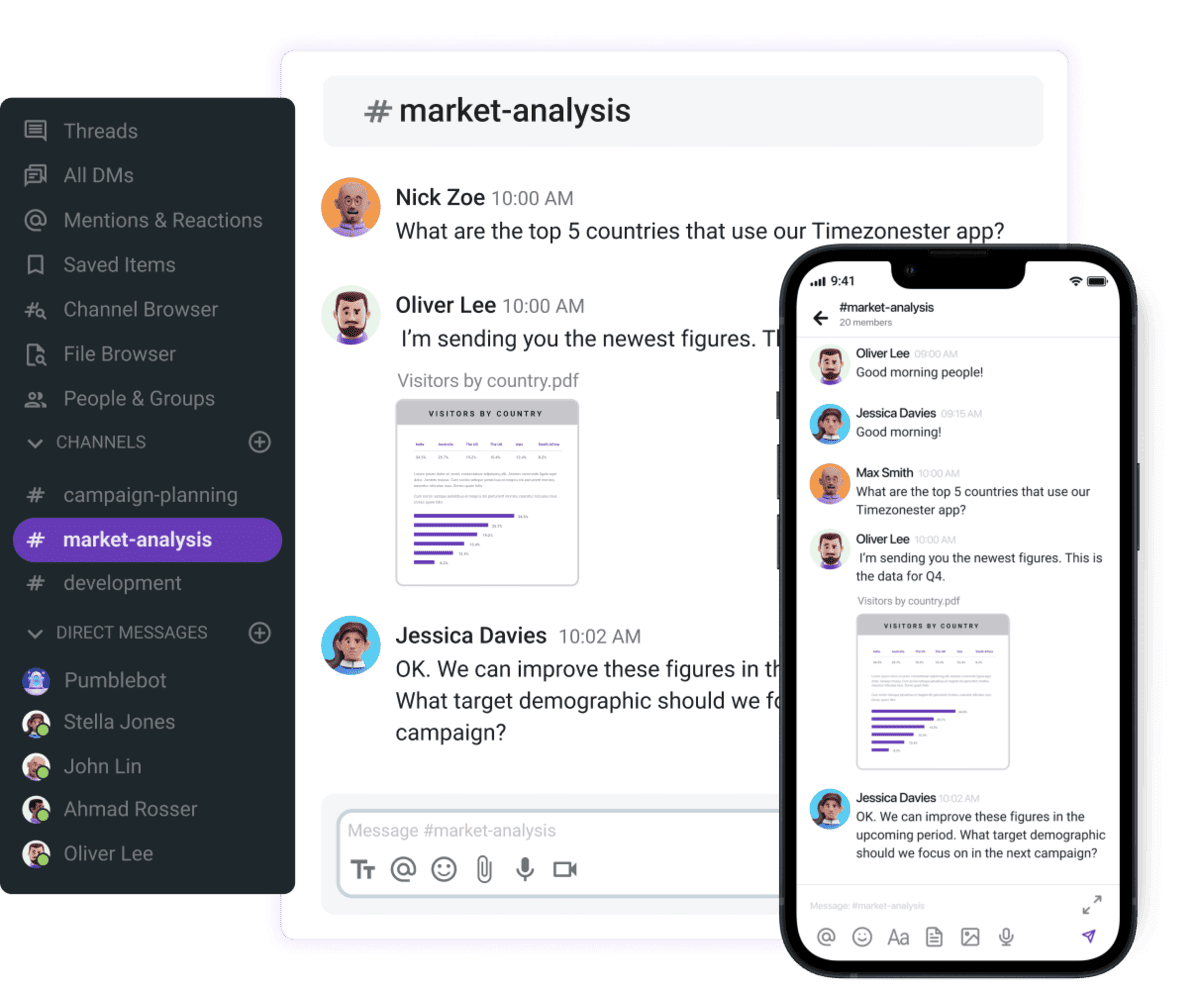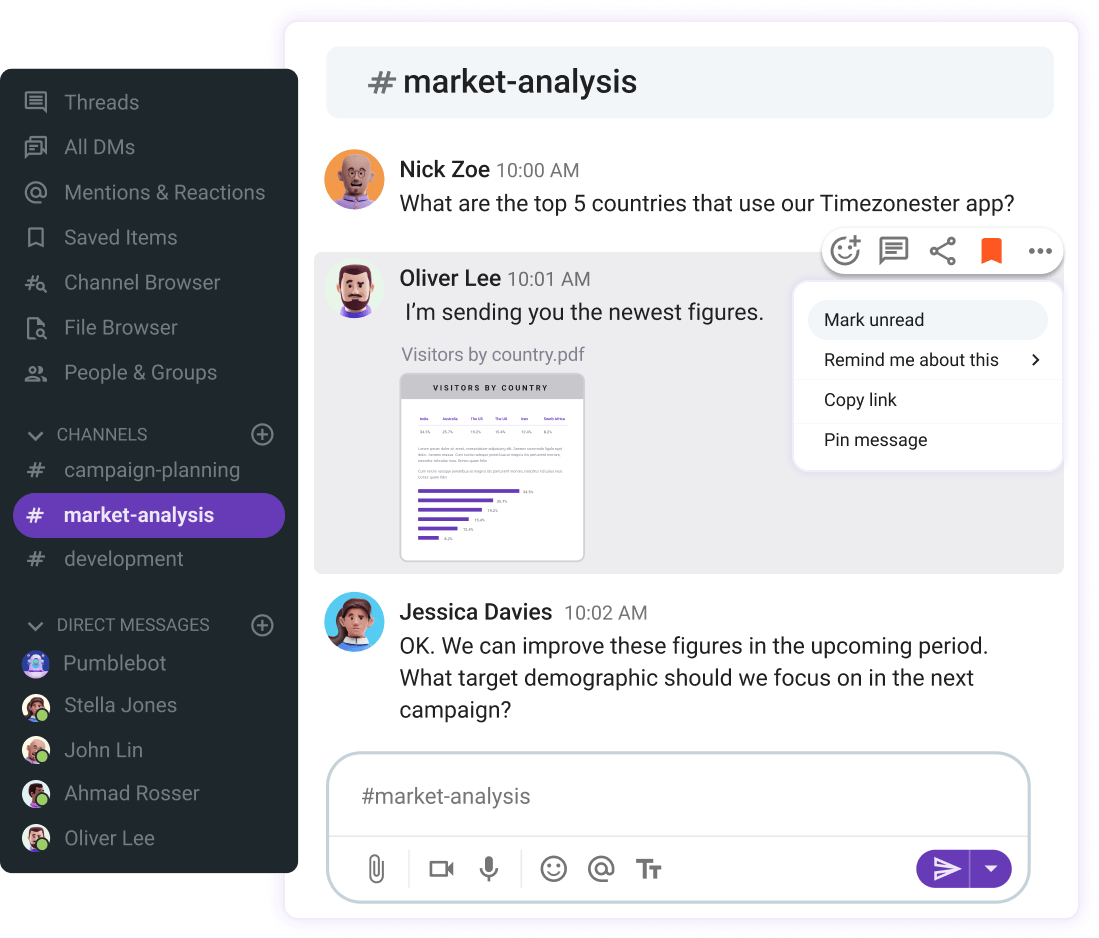What do Tim Ferris, Carl Jung, and Bill Gates have in common?
If you’re thinking luck, unimaginable wealth, and incredible success, you’re not wrong.
But, what made their success possible?
They all learned how to increase their focus in demanding industries and maintain productivity despite distractions. In other words, the common thread connecting these influential figures is their dedication to the practice of deep work.
This concept has become popular in recent years, particularly for its benefits to our well-being, career prospects, and productivity.
But what exactly does it entail? More importantly, can it truly help people struggling to stay focused at work?
We’ll dissect the principles behind the deep work strategy and explore its impact and practicality. Finally, we’ll go over actionable steps to help you create a sustainable deep work routine.
Let’s jump right in.

Table of Contents
What is deep work?
Deep work is a state that allows us to engage with tasks and activities with peak focus, free from distractions, and pushes our cognitive abilities to their full potential.
The term was coined by Cal Newport, a professor of computer science at Georgetown University and author of Deep Work: Rules for Focused Success in a Distracted World.
Part of Newport’s hypothesis is that when we don’t pay attention to how and where we invest our time and energy, we dedicate our days to unfulfilling work.
Then, how can you be more mindful of the type of work you engage with?
Know the difference: deep work vs. shallow work
Think of deep work and shallow work as two sides of the same coin.
The former refers to activities that require a significant level of mental strain, such as:
- Coding,
- Writing a compelling pitch, or
- Evaluating potential investment opportunities.
The latter describes tasks we can easily complete even when distracted, like:
- Scheduling business calls,
- Catching up on messages in your team communication app, or
- Skimming emails.
The thing is, for most knowledge workers, a typical day is packed with shallow work. Consequently, developing a deep work routine that provides space for profound thinking and innovation takes careful and deliberate planning.
But, what advantages can you expect from regular deep work sessions?
The benefits of deep work
With regular practice, deep work can become an invaluable skill in both your professional and everyday life. Here are some of the most notable benefits you can enjoy:
- Fewer distractions: You swear you’ll only look at one email, and the next thing you know, it’s been half an hour, and your inbox is still holding you hostage. These types of distractions negatively impact our concentration flow, similar to how multitasking dulls productivity. The deep work framework doesn’t magically eliminate distractions. Instead, it rewires our brain to only focus on one specific task for a longer period. As deep work retrains the brain to ignore irrelevant stimuli (emails, notifications, etc.), distractions won’t stand a chance against your drive and commitment.
- Improved efficiency: According to this Task Management Trends Report, we waste nearly 8 hours a week on unproductive work. That’s almost a whole workday. Think of what you can achieve in that time with focused work — secure a sales deal, wrap up a project, or onboard a new client. In a world that moves forward at a rapid pace, employees who can tune out the noise and learn new skills will gain a competitive advantage.
- Increased fulfillment: Caught between shallow work and distractions, you have little room for meaningful connections and reflection. On the flip side, deep work allows us to reevaluate what we do with our time. It encourages us to identify tasks that contribute to our goals, helping teams prioritize their most meaningful and important work. This immersion in our tasks can lead to a deep sense of achievement and fulfillment, believes Newport.
💡 Pumble Pro Tip
For more insight on how to combat distractions at work, check out this blog post:
How to get started with deep work
If you’ve never tried a similar framework before, you might be at a loss as to how to practice deep work.
Fortunately, you can make simple changes today to fast-track your productivity journey.
#1 Pick your philosophy
You’ll first have to decide which deep work philosophy you align with the most.
How we work largely depends on our personality and lifestyle, so Newport singles out 4 distinct approaches:
- The rhythmic philosophy works best for people with a relatively fixed schedule. If your work week rarely ever changes, you can pencil in a few deep work hours every day without disturbing your schedule. You can use the remaining time to handle shallow work.
- The bimodal philosophy takes a bit more commitment. It’s a good match for knowledge workers who like to divide longer periods of deep work with other obligations. Usually, you’ll dedicate at least 1 day to deep work and spend the rest of the week managing other activities.
- The monastic philosophy is the most rigorous of all deep work strategies. To achieve this level of focus, you have to remove all distractions, including business calls, meetings, and messaging. While doable for people with a flexible schedule, it’s not always realistic for those whose job involves cross-functional collaboration.
- The journalistic philosophy is a handy solution if you rarely know what your day will look like. After all, journalists often have to produce outstanding pieces on tight deadlines. This means jumping into a deep work state whenever you have the opportunity and spot an opening in your tightly packed schedule. However, this method is only effective if you excel in time management and are good at noticing time gaps to squeeze some deep work into your routine.
You don’t have to immediately commit to one set method. Give several of these philosophies a try and see which yields the most noticeable improvement.
#2 Pick a tool that supports your objectives
Newport highlights that mastering deep work entails reasserting control over our time, and this involves reevaluating which digital tools we use.
So, don’t settle for an app only because it seems beneficial. Instead, choose tools that help you stay focused rather than drag you back into mindless scrolling.
Apps like Pumble allow you to streamline communication, so you can spend less time switching between tools and more time doing work that matters.

You can:
- Organize conversations into channels,
- Share files easily, and
- Quickly find past messages with its searchable history.
Remember to only stick to tools whose features will bring you closer to achieving your goals.
Pumble helps you prioritize your work and conversations better
#3 Distraction-proof your workspace
Make deep working easier by becoming more intentional about how you communicate.
Not all messages warrant an immediate response, so lean into asynchronous communication.
The task at hand is your priority, and before switching tabs to read a message, ask yourself: “Is a prompt reply really necessary?”
To ward off unwanted interruptions, you can mute notifications in your communication app and chip away at your project in peace.

The Do Not Disturb Mode will ensure all notifications and messages are there once you finish your deep work session.
But, don’t forget to let your teammates know about your availability. Use status updates to indicate what you’re up to and when would be a good time for colleagues to reach out.
Teams that successfully implement deep work routines know that each member should have the autonomy to decide how to manage shallow work.
#4 Prioritize urgent tasks
Before getting around to high-impact work, think about what you want to accomplish.
When you have a clear vision of the purpose of each deep work session, you can engage with your tasks more effectively.
A to-do list can keep you on track and simplify prioritization. Although identifying personal to-dos is important, you should also clarify team goals. Think of these as a group compass that ensures no team members veer off the agreed business path.
Keep these objectives transparent and accessible. For example, if you have a document outlining quarterly goals, share it in your team channel and pin it for maximum visibility. This way, everyone will be able to retrieve the file and use the info to further refine their deep work practice.

#5 Measure progress
How can you be sure your deep work routine is bringing the desired results?
You’ll have to periodically reevaluate your approach to measure progress and overcome challenges.
Note how much time you’ve dedicated to deep work and whether your productivity and performance have improved. To keep things simple, you can use milestones to create a sense of progression.
For instance, you can decide to complete a product presentation in a week. Next week, revisit your past activities and see whether you’ve met your expectations. Even if the task took you longer than anticipated, you can use the info to see which distractions consumed the time you set aside for deep work.
Step into your deep work state with Pumble
Being able to fully commit to individual assignments and group tasks makes all the difference, especially when competitors constantly try to one-up your team.
The more you trust Pumble with your business communication and collaboration, the higher the reward. Whether you’ve set your app to Do Not Disturb or are actively using channels, threads, or video calls, Pumble is designed to provide a smooth experience.
Its integration with tools such as Gmail and Zapier and its ability to centralize information eliminate distractions. Features like scheduled messages and customizable notifications ensure your attention remains undivided when you’re knee-deep in intensive work, keeping you focused and connected with the rest of the team.
Start working smarter today







